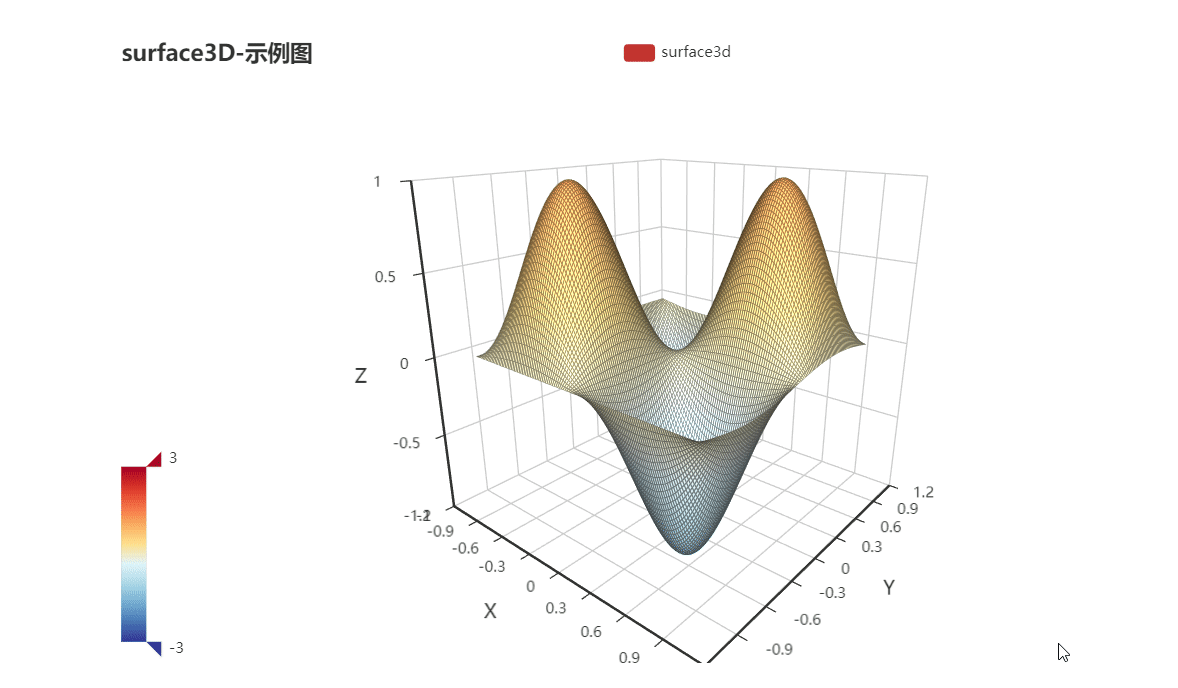
Security News
/Research
Wallet-Draining npm Package Impersonates Nodemailer to Hijack Crypto Transactions
Malicious npm package impersonates Nodemailer and drains wallets by hijacking crypto transactions across multiple blockchains.
github.com/askiada/go-echarts/v2

🎨 The adorable charts library for Golang.
If a language can be used to build web scrapers, it definitely needs to provide a graceful data visualization library. --- by dongdong.
In the Golang ecosystem, there are not many choices for data visualization libraries. The development of go-echarts aims to provide a simple yet powerful data visualization library for Golang. Apache ECharts is an outstanding charting and visualization library, it supports adorable chart types and various interactive features. There are many language bindings for Echarts, for example, pyecharts. go-echarts learns from pyecharts and has evolved a lot.
Classic way to get go-echarts
# this may be a stupid way to use v2 go-echarts without gomod(GO111MODULE=off) because of
# the next generation version management system... 🐶
# if you get a better workaround, please let me know....
$ go get -u github.com/go-echarts/go-echarts/...
$ cd $go-echarts-project
$ mkdir v2 && mv charts components datasets opts render templates types v2
Use gomod style
$ go get -u github.com/go-echarts/go-echarts/v2/...
OR
# go.mod
require github.com/go-echarts/go-echarts/v2
The go-echarts project is being developed under v2 version and the active codebase is on the master branch now.
v1 and v2 are incompatible which means that you cannot upgrade go-echarts from v1 to v2 smoothly. But I think it is worth trying that new version.
It's easy to get started with go-echarts. In this example, we create a simple bar chart with only a few lines of code.
package main
import (
"math/rand"
"os"
"github.com/go-echarts/go-echarts/v2/charts"
"github.com/go-echarts/go-echarts/v2/opts"
)
// generate random data for bar chart
func generateBarItems() []opts.BarData {
items := make([]opts.BarData, 0)
for i := 0; i < 7; i++ {
items = append(items, opts.BarData{Value: rand.Intn(300)})
}
return items
}
func main() {
// create a new bar instance
bar := charts.NewBar()
// set some global options like Title/Legend/ToolTip or anything else
bar.SetGlobalOptions(charts.WithTitleOpts(opts.Title{
Title: "My first bar chart generated by go-echarts",
Subtitle: "It's extremely easy to use, right?",
}))
// Put data into instance
bar.SetXAxis([]string{"Mon", "Tue", "Wed", "Thu", "Fri", "Sat", "Sun"}).
AddSeries("Category A", generateBarItems()).
AddSeries("Category B", generateBarItems())
// Where the magic happens
f, _ := os.Create("bar.html")
bar.Render(f)
}
And the generated bar.html is rendered as below. Isn't that cool!

Of course we can also start a listening web server with net/http.
package main
import (
"math/rand"
"net/http"
"github.com/go-echarts/go-echarts/v2/charts"
"github.com/go-echarts/go-echarts/v2/opts"
"github.com/go-echarts/go-echarts/v2/types"
)
// generate random data for line chart
func generateLineItems() []opts.LineData {
items := make([]opts.LineData, 0)
for i := 0; i < 7; i++ {
items = append(items, opts.LineData{Value: rand.Intn(300)})
}
return items
}
func httpserver(w http.ResponseWriter, _ *http.Request) {
// create a new line instance
line := charts.NewLine()
// set some global options like Title/Legend/ToolTip or anything else
line.SetGlobalOptions(
charts.WithInitializationOpts(opts.Initialization{Theme: types.ThemeWesteros}),
charts.WithTitleOpts(opts.Title{
Title: "Line example in Westeros theme",
Subtitle: "Line chart rendered by the http server this time",
}))
// Put data into instance
line.SetXAxis([]string{"Mon", "Tue", "Wed", "Thu", "Fri", "Sat", "Sun"}).
AddSeries("Category A", generateLineItems()).
AddSeries("Category B", generateLineItems()).
SetSeriesOptions(charts.WithLineChartOpts(opts.LineChart{Smooth: true}))
line.Render(w)
}
func main() {
http.HandleFunc("/", httpserver)
http.ListenAndServe(":8081", nil)
}

























For more information, please refer to go-echarts/examples and the GoDoc.
go-echarts is an open source project and built on the top of other open-source projects, hence we are always very happy to have contributions, whether for typo fix, bug fix or big new features. Please do not ever hesitate to ask a question or send a pull request.
We strongly value documentation and integration with other projects so we are very glad to accept improvements for these aspects.
Code with ❤️ by chenjiandongx / Koooooo-7 and lovely contributors
MIT ©chenjiandongx
FAQs
Unknown package
Did you know?

Socket for GitHub automatically highlights issues in each pull request and monitors the health of all your open source dependencies. Discover the contents of your packages and block harmful activity before you install or update your dependencies.

Security News
/Research
Malicious npm package impersonates Nodemailer and drains wallets by hijacking crypto transactions across multiple blockchains.

Security News
This episode explores the hard problem of reachability analysis, from static analysis limits to handling dynamic languages and massive dependency trees.

Security News
/Research
Malicious Nx npm versions stole secrets and wallet info using AI CLI tools; Socket’s AI scanner detected the supply chain attack and flagged the malware.